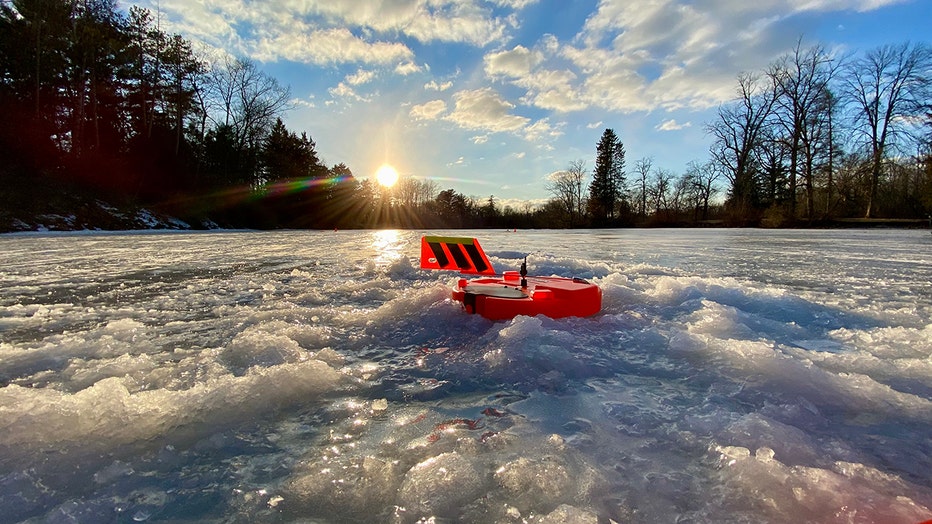Wisconsin DNR: Early ice covers unsafe, reminders as temps swing

FOX6 Winter Experts Winter Outlook
The FOX6 Weather Experts offer a winter outlook as southeast Wisconsin begins the cold weather months.
MADISON, Wis. - The Wisconsin Department of Natural Resources reminds the public to practice early-winter ice safety – and reminds everyone that no ice is safe ice.
The temperature swings that mark the final weeks of every year can create ice covers, the DNR said. The ice covers hide the currents, debris and underground springs still feeding lakes and rivers.
SIGN UP TODAY: Get daily headlines, breaking news emails from FOX6 News
"After we have the first cold nights, we start to see the early ice. It may look solid to the naked eye, but it's not," said Lt. Jacob Holsclaw, DNR off-highway vehicle administrator. "There can be, and often are, cracks and changes in the ice thickness that you will not see.
"These factors and more are why no ice is ever considered safe – no matter the month."

The DNR does not monitor ice conditions, but they are monitored locally. Local fishing clubs, outfitters and bait shops are the best sources for local, current ice conditions.
However, the best idea for safe winter fun is to enjoy outings without travel over ice.
Conditions As Varied As Waters
If the outing does involve travel over a waterbody, the DNR reminds the public that every waterbody has its own characteristics. Check if the lake has inlets, outlets or narrows, is spring-fed or has currents, which can thin the ice.
The DNR said some smaller lakes can have aerators that are run throughout the winter either covering a large area towards the center of the lake or may have smaller aerators placed by private property landowners adjacent to their shore and/or piers.
Equally as important, the DNR said, is to stay alert for pressure ridges or ice heaves. These can be dangerous due to thin ice and open water and often are created, move or grow with changes in temperatures and high winds. This can happen on Wisconsin’s largest lake – Winnebago, a popular home to sturgeon spearers – and the Bay of Green Bay.
FREE DOWNLOAD: Get breaking news alerts in the FOX6 News app for iOS or Android.
Here are more safety tips:
- Carry a cellphone, and let people know where you are going and when you’ll return home.
- Wear proper clothing and equipment, including a personal flotation device or a float coat to help you stay afloat and to help slow body heat loss.
- Take an extra pair of mittens or gloves, so your hands can remain dry and warm.
- Wear creepers attached to boots to prevent slipping on clear ice.
- Carry a spud bar to check the ice while walking to new areas.
- Carry a couple of spikes and a length of light rope in an easily accessible pocket to help pull yourself – or others – out of the ice.
- Do not travel in unfamiliar areas – or at night.
- Have a plan in place noting where you will be and when you plan to return. Along with leaving a written note of your plans, it is also recommended to keep a charged cell phone.
If the worst happens, and you happen to fall in, here’s what to do:
- Carry a couple of hand-held spikes and a length of light rope in an easily accessible pocket or inside your sleeves to help pull yourself – or others – out of the ice.
- If you fall in, remain as calm as possible and while attempting to assist yourself out of the water, call for help as soon as you can. Anyone who attempts to rescue you is also recommended to use a rope or something similar to avoid falling through as well.

